Do you have a potted or in-ground lemon tree outside your home? You may wonder if you can leave it out in the cold when winter arrives. You're on the right page, because we researched thoroughly to discover whether this is possible.
Lemon trees are generally cold-sensitive, but they can withstand moderately low temperatures during winter. However, they need extra maintenance and protection under these conditions.
In this post, we have a detailed discussion of how to care for a lemon tree during cold months. We'll also explore the tree's primary care, propagation, harvesting, and ideal companion plants. Keep on reading to learn more.
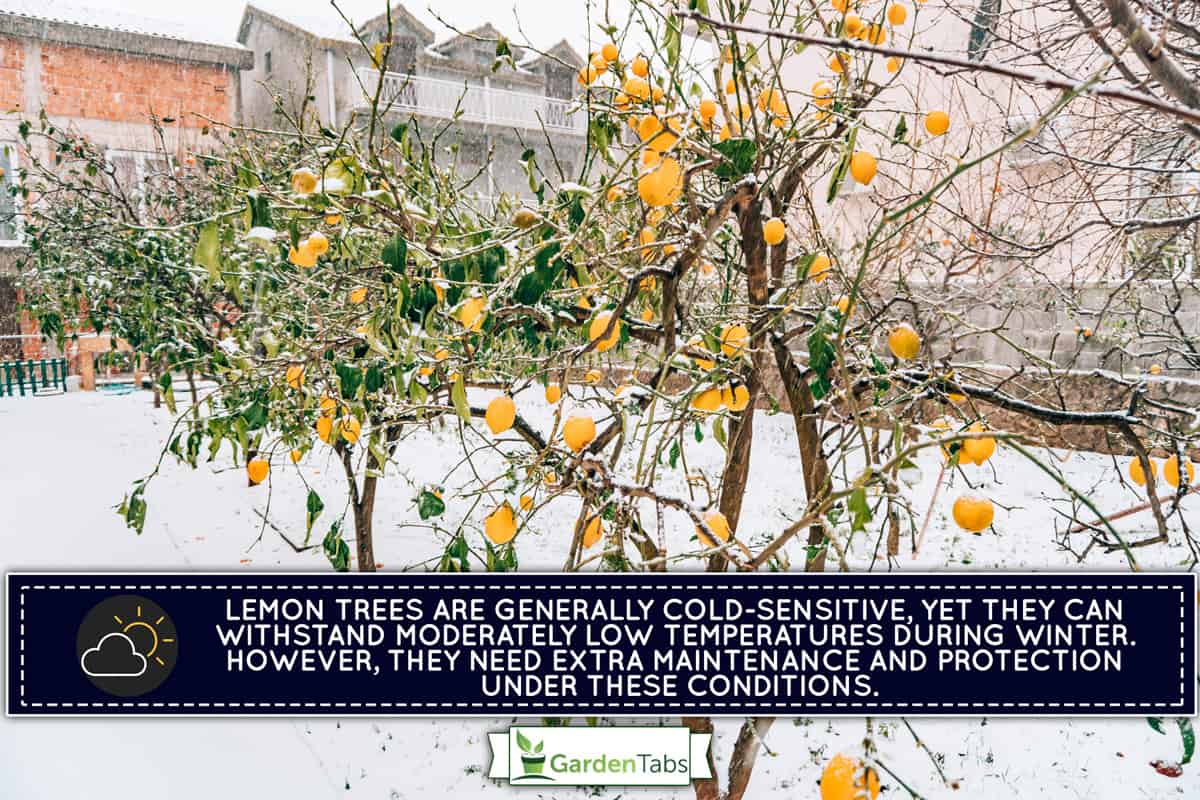
What Is A Lemon Tree?
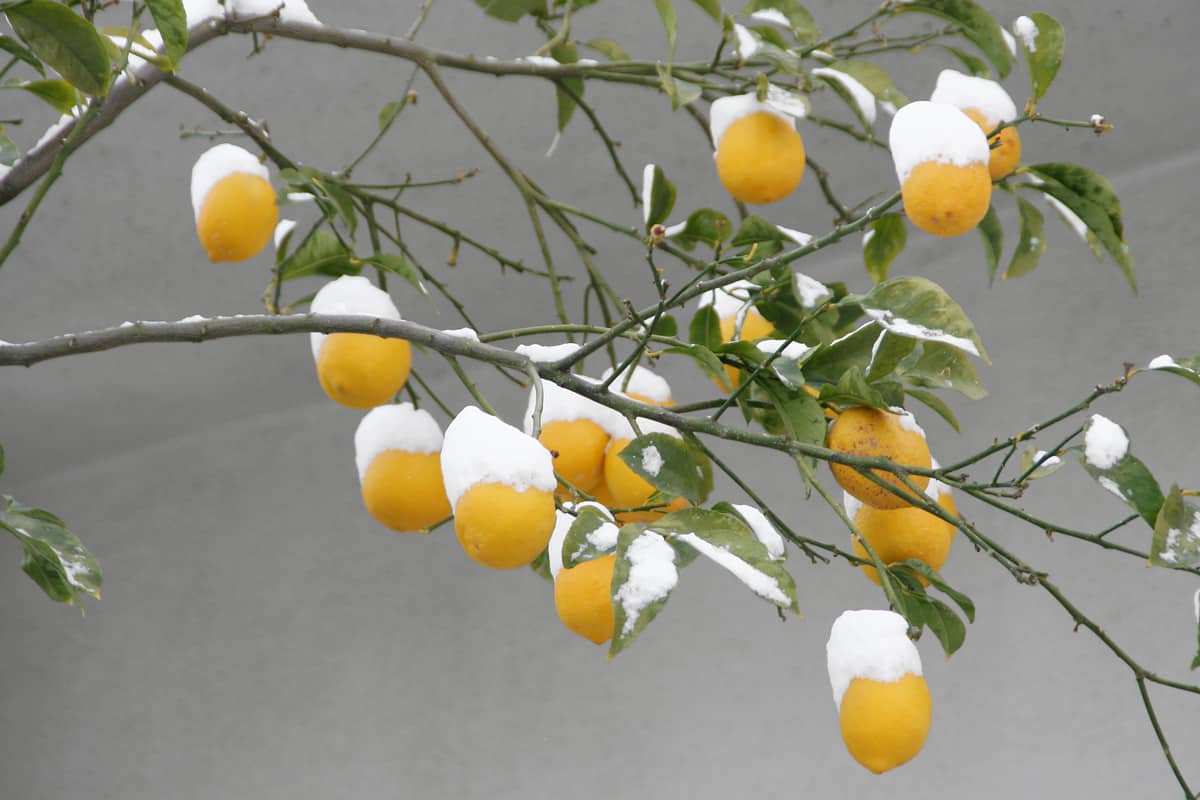
A lemon (Citrus limon) is an evergreen shrub with yellow edible fruits. Its characteristics lie between sour orange and citron. It can be traced back to Asian countries such as India, Myanmar, and China and is widely grown across the globe.
Comparable to grapefruit and limes, it is a good source of citric acid and vitamin C. Throughout history, people have accepted it as a traditional remedy for scurvy, a crippling deficiency.
Because of its nutritional value, this citrus tree also offers extensive benefits in cooking, medicine, aromatherapy, cosmetics, and fermentation. As a result, its world production has reached millions of tons.
Lemon has several cultivars from different regions. The orange-yellow Meyer is an ever-bearing species. In contrast, seedless Lisbon and thornless Eureka yield in the spring and winter.
Click here to see this potted dwarf lemon tree on Amazon.
How Do You Identify A Lemon Tree?
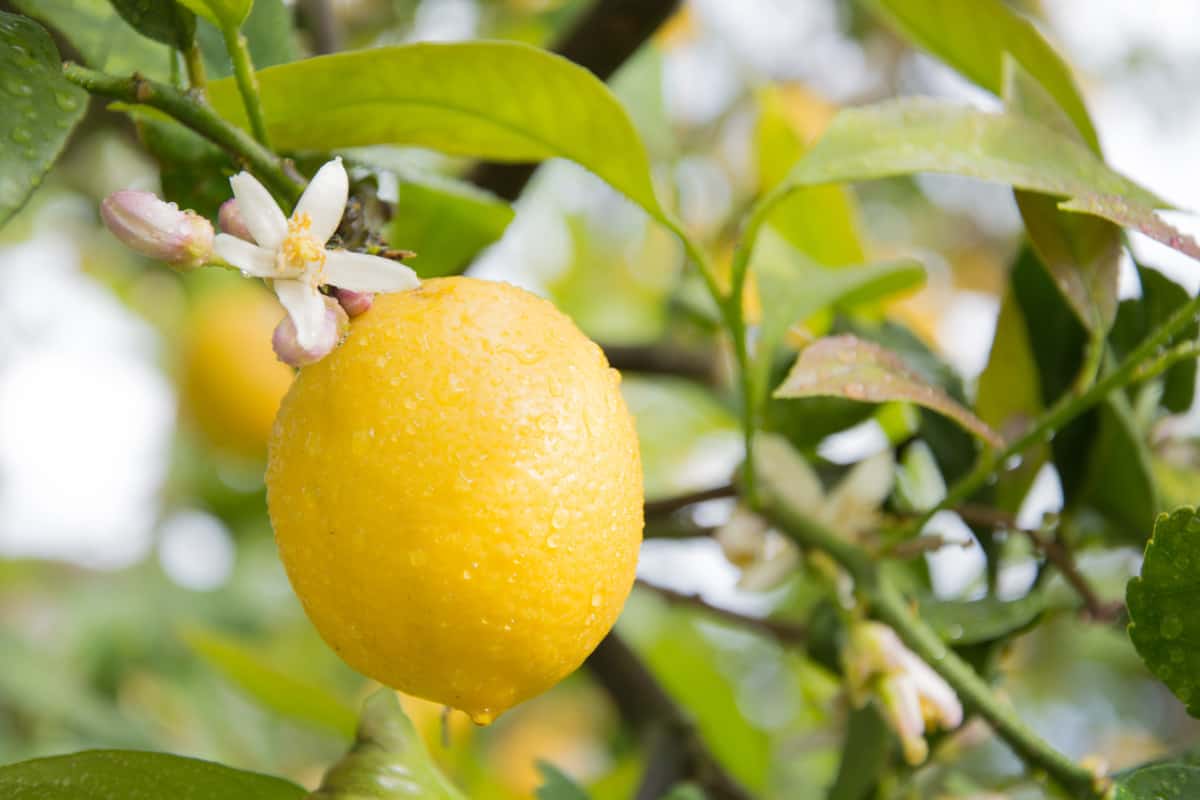
Aside from the vibrant crops, you will notice thorns along its twigs. This upright shrub has other identifiable features.
Leaves
The lemon tree has alternating foliage that is initially red but turns dark green upon maturity. Its dried leaves are also suitable for adding flavor to drinks and foods.
Flowers
Before they turn into fruit, showy flowers with four to five petals blossom. These purplish white clusters emit a mildly sweet fragrance.
Fruit
Upon maturation, this plant bears fruit throughout the year. It is self-pollinating, meaning one tree is enough to produce crops.
Lemons have segmented pulps inside and a bump at the outer tip. Whether raw or cooked, they have a distinctly sour taste. Even the rind or outer skin comes with a purpose, especially in the culinary world.
Roots
Like other citrus plants, lemons possess a shallow and fibrous root system. Its roots spread in all directions and surpass the drip line.
How To Grow A Lemon Tree
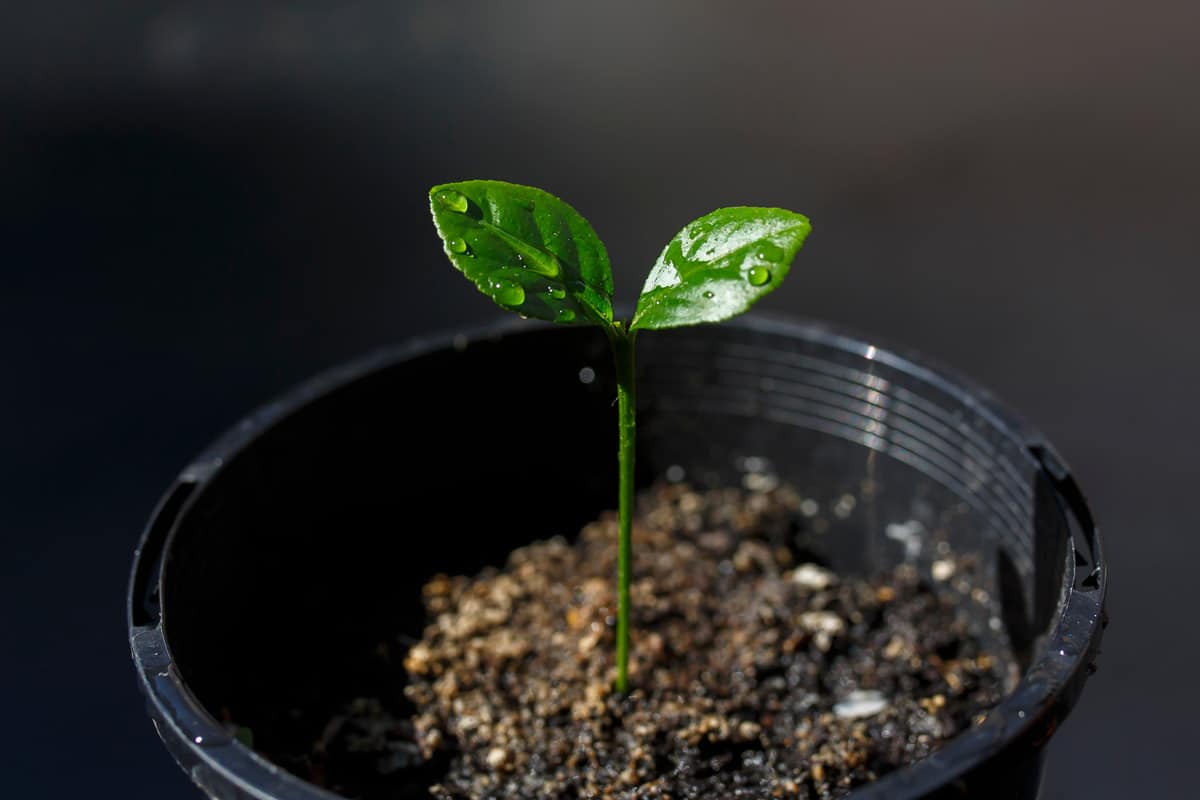
Basic Care
The lemon tree is low maintenance and comes in various cultivars, but you should remember to provide these essential conditions, so your tree will thrive.
- Sowing Season:early spring or year-round in tropical and sub-tropical areas
- Maturation Period: 3 to 5 years
- Average Height and Spread: 10 to 20 feet tall and 10 to 15 feet wide
- Average Lifespan: over 50 years
- Soil Condition: well-drained and aerated; neutral to mildly acidic; clay or loamy
- Light Exposure: full to part sun
- USDA Hardiness Zones: 9 to 11
Pests and Diseases
Similarly, watch out for these common problems because this versatile shrub cannot tolerate post-emergent herbicides.
- The withering of crown and foot
- Infestation of spiders, scales, aphids, and mealybugs
- Growth of weeds
- Infection of Tristeza virus
Propagation
There are several ways to propagate or clone the lemon tree: seed germination, budding, stem cutting, and tissue culture. Each technique has specific tools, care requirements, and a root sprouting timeline.
Regardless of the method, the best location is in the south or southeast to protect the plant from the cold winds in the northwest. Meanwhile, allot 25 feet of space if you're growing the trees in groups.
Watch this clip to see the step-by-step procedure for seed development.
Watering
The irrigation of lemons is weekly or bi-weekly. The amount of watering also depends on canopy size and the humidity and temperature of its location. For instance, the larger the canopy, the greater the amount of water needed.
In contrast, the water requirement decreases when the cold period starts. Nonetheless, water the plant if you feel the dry soil within two to three inches deep.
Fertilizing
Opt for citrus fertilizers with 6-6-6 or 8-8-8 NPK to stimulate healthy growth and enhance fruit appearance.
Schedule the application every three months but skip it during winter. Similarly, you can use the slow-release version for a one-time process.

Click here to see this pack of organic fertilizer spikes on Amazon.
For more options to provide additional nutrients for your shrub, view this guide: 5 Best Fertilizers For Citrus Trees.
Pruning
When the shrub's height is at least four feet, use sterilized pruning shears to cut the dead and long branches during late winter or early spring. It helps maintain the tree shape and airflow.

Click here to see these non-slip pruning shears on Amazon.
When Should I Bring My Lemon Tree Inside?
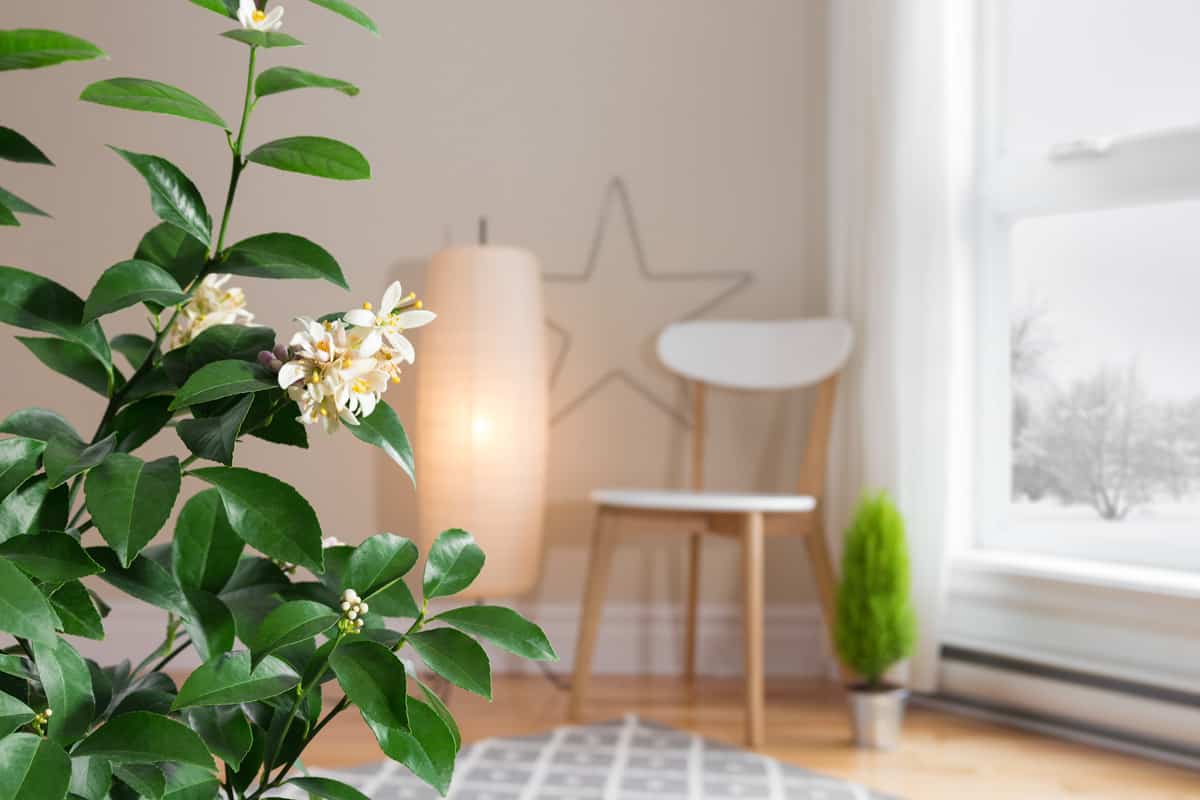
Bring the potted lemon tree inside your home before the temperature drops between 20 and 29 degrees Fahrenheit. By knowing the lowest temperature it can tolerate, you will avoid defoliation, cold injury, slow growth, and eventually death.
For more insights into extending the life of your lemon tree, explore this post: Why Is My Lemon Tree Dying?
When Can I Put My Lemon Tree Back Outside?
When early spring comes, re-acclimate your potted lemon tree to its outdoor surroundings. At least one hour daily of sun exposure allows the plant to adapt to new conditions.
Do Lemons Lose Their Leaves In Winter?
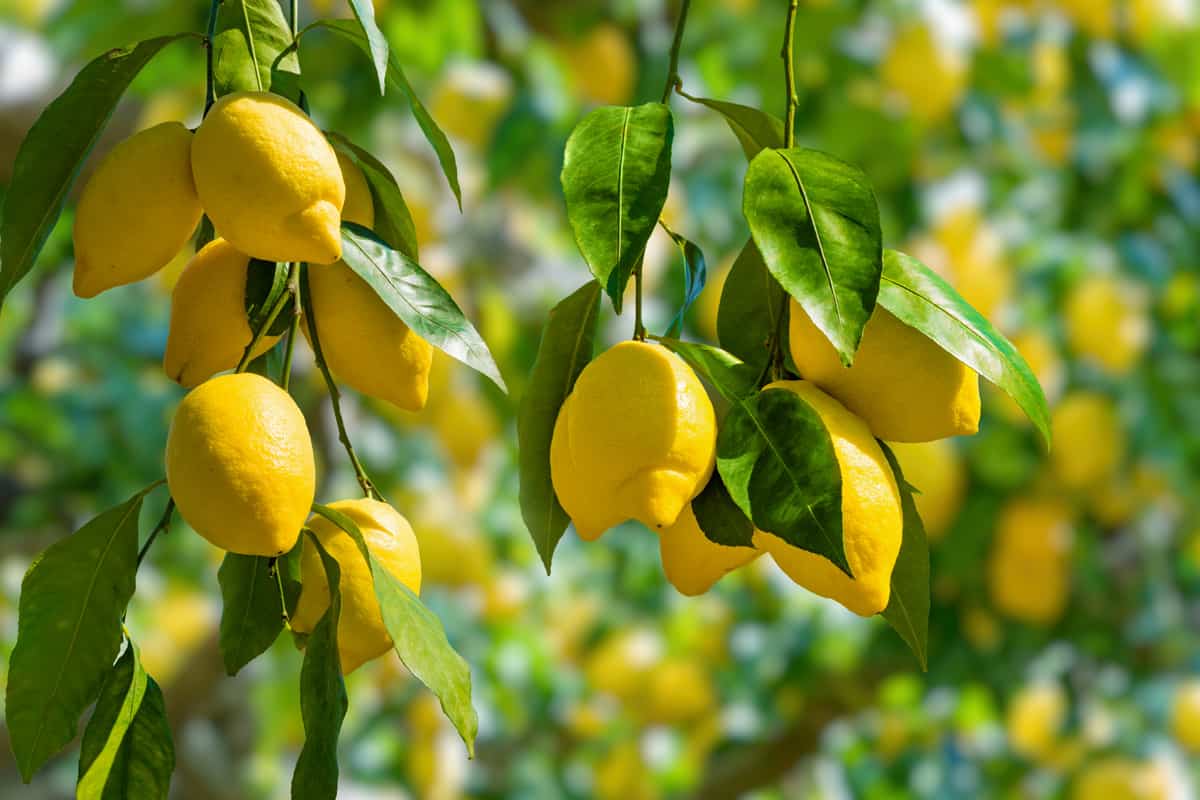
Generally, lemons do not shed their leaves during winter under slight frost. Instead, they will stop growing new leaves.
However, there can be other reasons if ever it happens aside from the temperature. These include improper watering and poor nutrition.
Are Lemons Dormant In Winter?
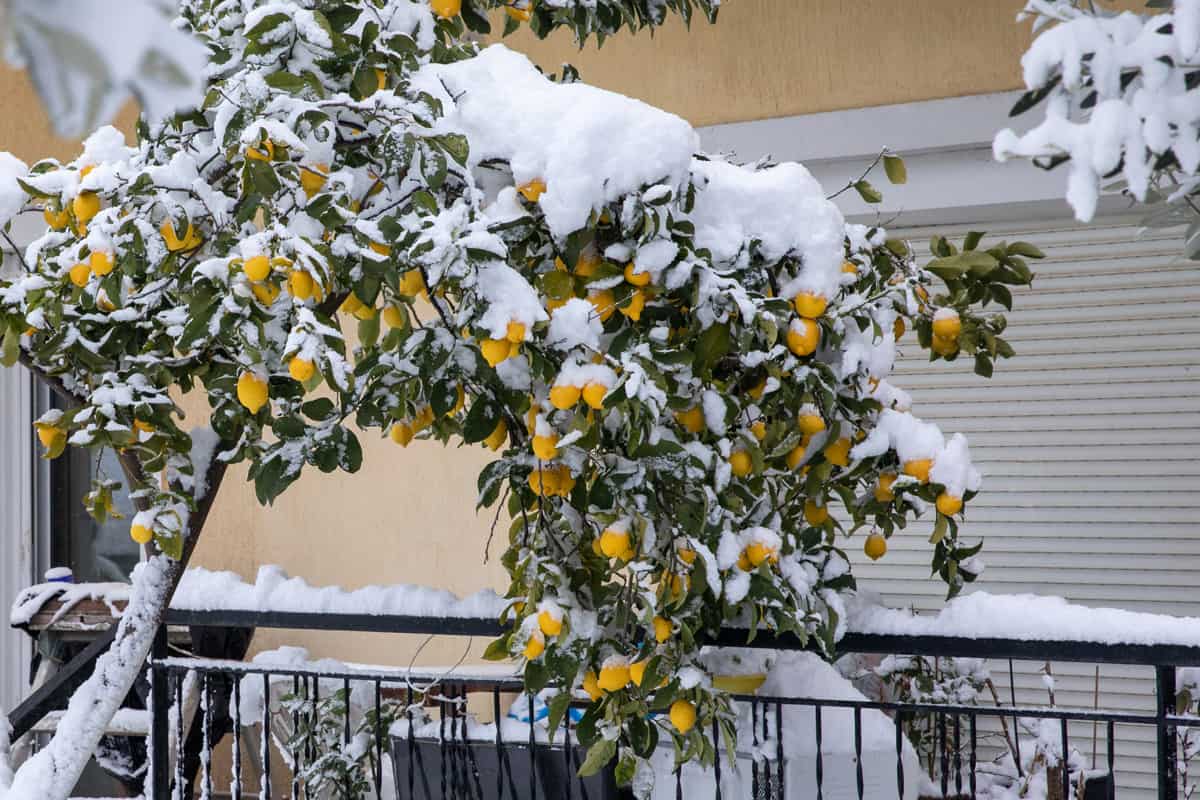
As an evergreen plant, lemons do not undergo dormancy but develop slowly.
Unique varieties flourish and bear fruits during the cold months because of hybrid cultivation. The cold-hardy lemon trees are Berna, Eureka, Interdonato, and Monachello.
How Do You Protect A Lemon Tree During Winter?
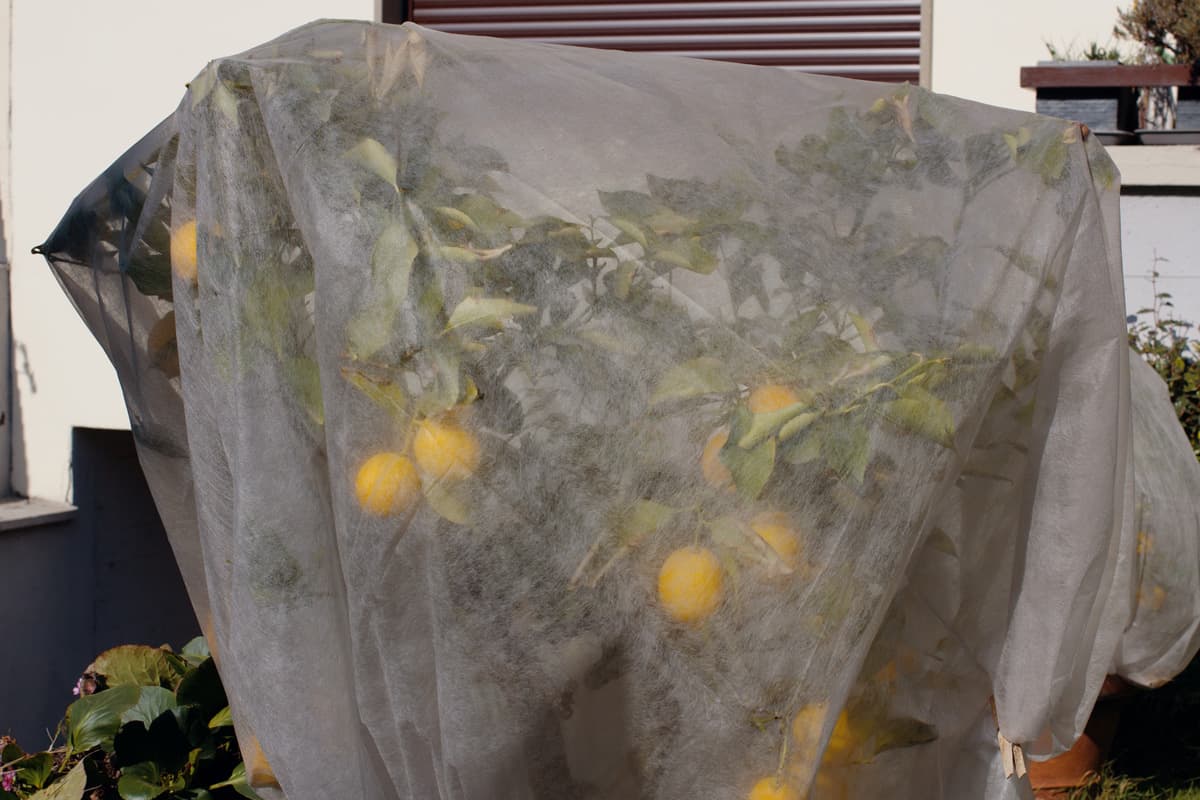
Citrus plants like lemons do not have the same levels of cold-hardy. You can consider methods before planting, such as purchasing the rootstock or cold-resistant variety and choosing the best location.
Nonetheless, you can still protect it while growing. Even though you can readily transfer shrubs grown in containers, the ones on the ground require different solutions.
To care for a matured citrus tree from cold, perform one or more of these short-term yet practical strategies.
Cover with sheets
Old blankets, quilts, or sacks are handy to sustain the accumulated heat within the day.
Use an artificial heat source
Holiday light strips or incandescent light bulbs offer additional heat for the trees with smaller or medium canopy.
Moisten the bare ground
This method prevents heat radiation throughout the night.
Water the canopy deeply during the frost
It maintains the tissue temperature of leaves and branches, reducing their breakage.
How Much Lemon Does A Lemon Tree Produce?
The amount of lemon fruit depends on where you plant it. Generally, in-ground trees have higher yields compared to container-grown ones. Despite the gap, the ever-bearing species have a yearly average of six to 10 harvest periods.
For instance, a five-year-old shrub in the ground can produce over 800 fruits (200 pounds) in a year, whereas the latter is more than 300 lemons (80 pounds). Meanwhile, the orchards make around 1500 per tree annually.
How To Harvest Lemons

Know the best time to harvest lemons. The skin should be yellow and glossy. Another way to tell if the fruit is ripe is to slice one and taste it. Aside from a sour or slightly sweet flavor, the lemon must be juicy and firm.
You can also use liquid measuring instruments like a refractometer with a Brix scale. This tool will determine if it the fruit is within the ideal sucrose level (6 to 12 percent).

Click here to see this refractometer kit on Amazon.
Although picked lemons will no longer ripen after picking, you can place the unready ones at room temperature. It will not improve the taste, but the color will change. Once ready, the fruit will last up to eight weeks inside the fridge.
Dos
When it is harvest time, remember to perform these best practices.
- Trim your fingernails short.
- Use a stable ladder to access fruit.
- Wear cotton gloves to prevent fruit punctures.
- Use picking bags or aprons to hold crops.
- Apply these basic actions: twist, tilt, and snap.
- Cut closely from the lemons' button.
Don'ts
Avoid committing these common mistakes while harvesting lemons.
- Harvesting during cold (less than 55 degrees Fahrenheit) or hot (greater than 95 degrees Fahrenheit) weather.
- Picking lemons that are on the ground, moldy, or diseased.
- Dropping them from a height of over nine inches.
- Keeping the stem portion of the fruit.
- Leaning too much or standing at the topmost level of the ladder.
- Storing the picked fruits in direct sunlight.

Click here to see this harvest picking apron on Amazon.
What To Plant Under A Lemon Tree

Companion plants with shallow roots are ideal for stand-alone lemon trees. However, do not grow other greeneries alongside the potted shrubs. Crowded root spacing hampers the development of lemons.
Here are a handful of plants to attract bees and repel pests.
- Annual or perennial alyssum
- Bee balm
- Chamomile
- Daisies
- Echinacea
- Impatiens
- Lobelia
- Nasturtium
- Pansies
- Rosemary
Final Thoughts

This fruit-bearing citrus tree can survive outdoors during winter. You should perform long-term and short-term cold protection techniques to keep it alive and nourished.
Thanks for reading! If you enjoyed this post, explore these related articles on citrus greeneries:
5 Of The Fastest-Growing Citrus Trees To Know
How To Overwinter Lemon Trees?

